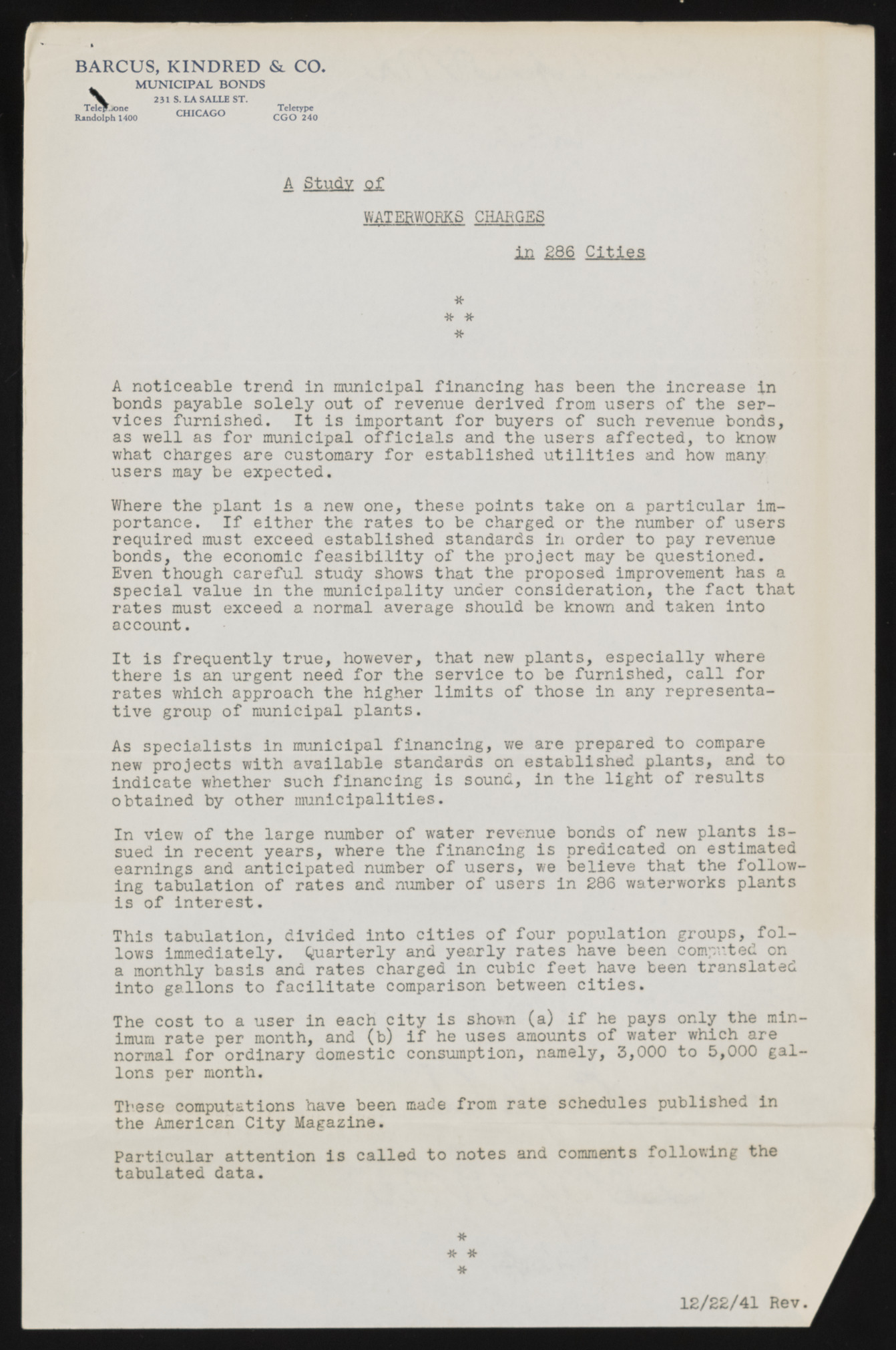Copyright & Fair-use Agreement
UNLV Special Collections provides copies of materials to facilitate private study, scholarship, or research. Material not in the public domain may be used according to fair use of copyrighted materials as defined by copyright law. Please cite us.
Please note that UNLV may not own the copyright to these materials and cannot provide permission to publish or distribute materials when UNLV is not the copyright holder. The user is solely responsible for determining the copyright status of materials and obtaining permission to use material from the copyright holder and for determining whether any permissions relating to any other rights are necessary for the intended use, and for obtaining all required permissions beyond that allowed by fair use.
Read more about our reproduction and use policy.
I agree.Information
Digital ID
Permalink
Details
More Info
Rights
Digital Provenance
Publisher
Transcription
BARCUS, KINDRED & CO. Telefjooe Randolph 1400 MUNICIPAL BONDS 231 S. LA SALLE ST. CHICAGO Teletype CGO 240 A Study of WATERWORKS CHARGES In 286 Cities * * * * A noticeable trend in municipal financing has been the increase in bonds payable solely out of revenue derived from users of the services furnished. It is important for buyers of such revenue bonds, as well as for municipal officials and the users affected, to know what charges are customary for established utilities and how many users may be expected. Where the plant is a new one, these points take on a particular importance. If either the rates to be charged or the number of users required must exceed established standards in order to pay revenue bonds, the economic feasibility of the project may be questioned. Even though careful study shows that the proposed improvement has a special value in the municipality under consideration, the fact that rates must exceed a normal average should be known and taken into account. It is frequently true, however, that new plants, especially where there is an urgent need for the service to be furnished, call for rates which approach the higher limits of those in any representative group of municipal plants. As specialists in municipal financing, we are prepared to compare new projects with available standards on established plants, and to indicate whether such financing is sound, in the light of results obtained by other municipalities. In view of the large number of water revenue bonds of new plants issued in recent years, where the financing is predicated on estimated earnings and anticipated number of users, we believe that the follow ing tabulation of rates and number of users in 286 waterworks plants is of interest. This tabulation, divided into cities of four population groups, follows immediately. Quarterly and yearly rates have been computed on^ a monthly basis and rates charged in cubic feet have been translated into gallons to facilitate comparison between cities. The cost to a user in each city is shown (a) if he pays only the min iraum rate per month, and (b) if he uses amounts of water which are normal for ordinary domestic consumption, namely, 3,000 to 5,000 gal Ions per month. These computations have been made from rate schedules published in the American City Magazine. Particular attention is called to notes and comments following the tabulated data. * * * * 12/22/41 Rev

